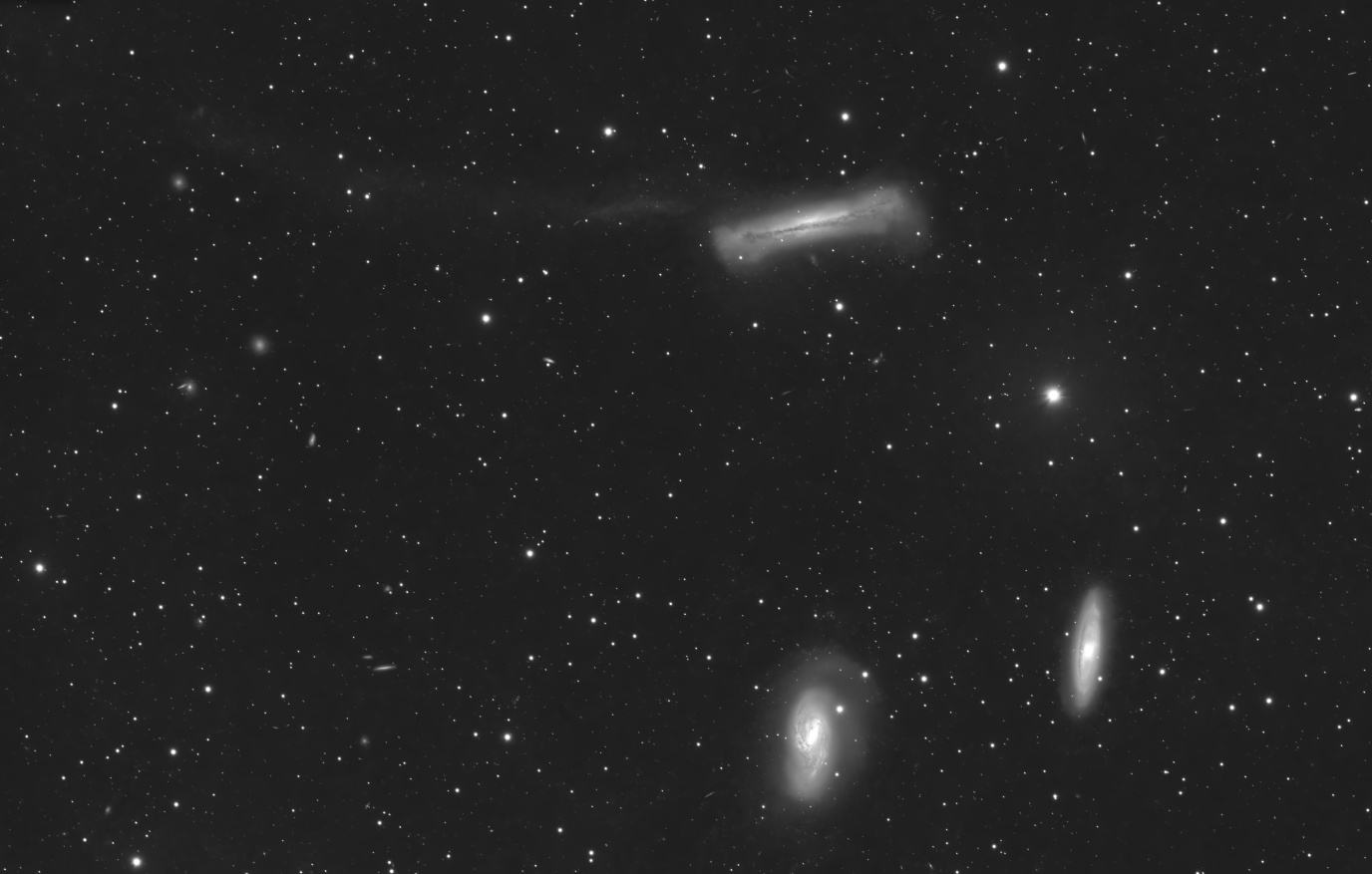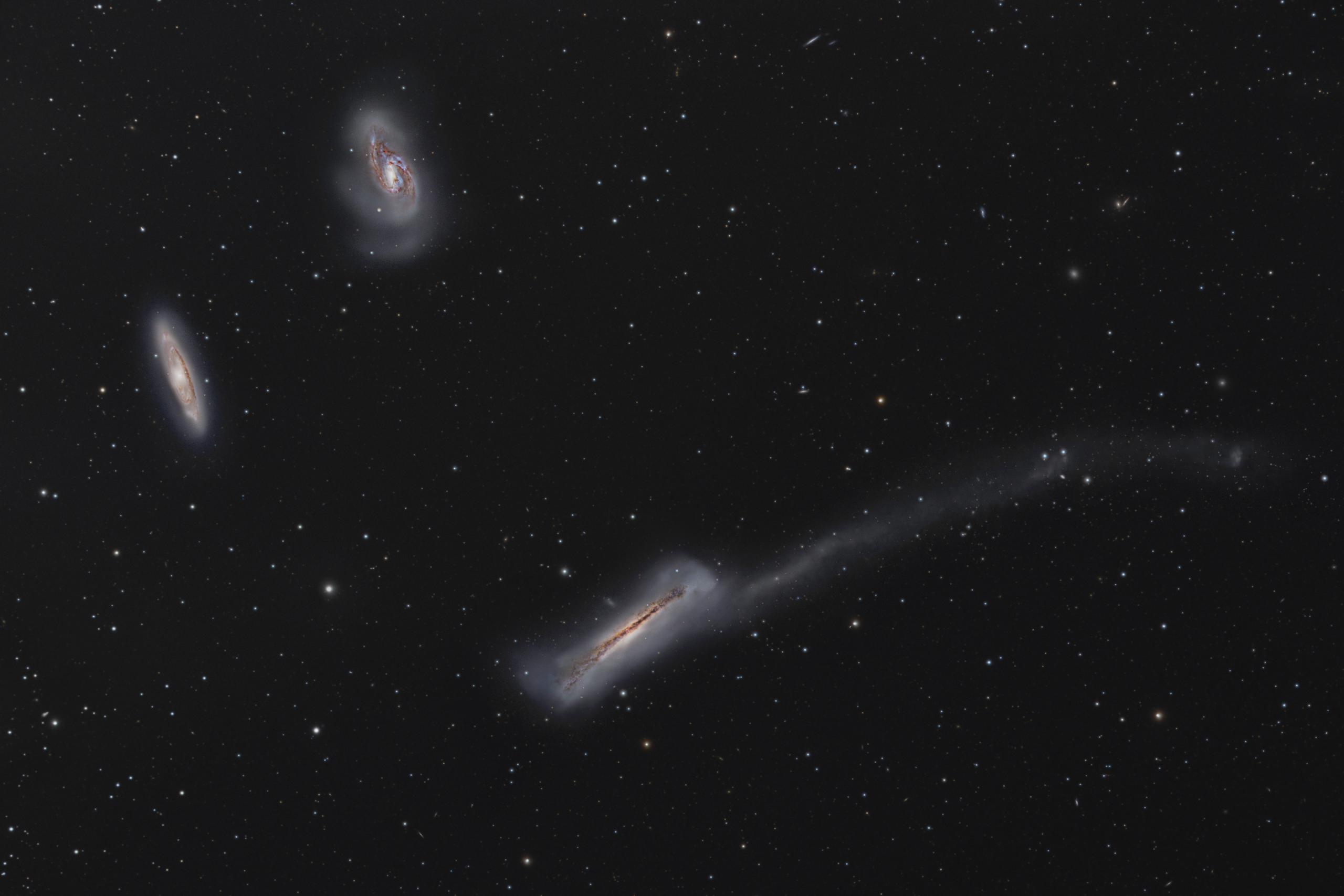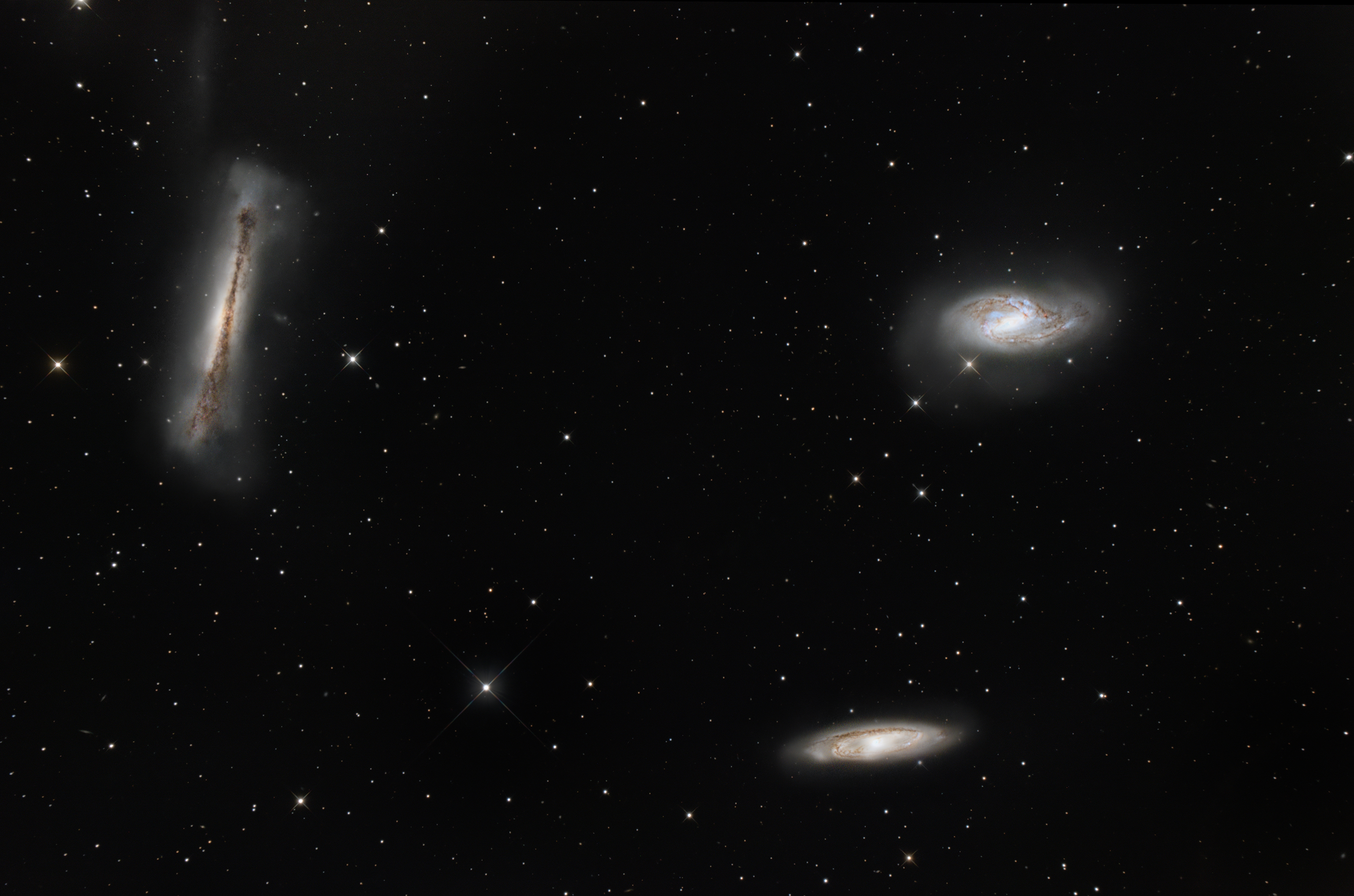Hi everyone,
As you certainly know, the galaxy NGC3628 has got a very dim (I hope that is the right word), tail of dust. Almost all images do not show this dust tail but it exists and some images show it.
I have processed my most recent image of the Leo Triplet, a result of 508x120" subs, taken with my QHY600PH C on my TSRC12". Everything fine, you can see that image in my portfolio here on Astrobin. However, that dim tail does not show up - it also is not existing on the raw stacks.
Now my question - I used - as recommended, a gain setting of 26 and offset 40 and my suspicion is that this offset of 40 was too high to make that dust tail visible. Other user told me to disregard those settings and use gain 60 and offset 0, some said gain 0 and offset 10…an so on.
Have you had a similar situation with some very dim details and how did you resolve them successfully?
You comments and suggestions are highly appreciated!
Thanks and CS,
Georg
As you certainly know, the galaxy NGC3628 has got a very dim (I hope that is the right word), tail of dust. Almost all images do not show this dust tail but it exists and some images show it.
I have processed my most recent image of the Leo Triplet, a result of 508x120" subs, taken with my QHY600PH C on my TSRC12". Everything fine, you can see that image in my portfolio here on Astrobin. However, that dim tail does not show up - it also is not existing on the raw stacks.
Now my question - I used - as recommended, a gain setting of 26 and offset 40 and my suspicion is that this offset of 40 was too high to make that dust tail visible. Other user told me to disregard those settings and use gain 60 and offset 0, some said gain 0 and offset 10…an so on.
Have you had a similar situation with some very dim details and how did you resolve them successfully?
You comments and suggestions are highly appreciated!
Thanks and CS,
Georg


